Stockbroking Market Size 2025-2029
The stockbroking market size is valued to increase USD 27.45 billion, at a CAGR of 10.1% from 2024 to 2029. Need for market surveillance will drive the stockbroking market.
Major Market Trends & Insights
- North America dominated the market and accounted for a 40% growth during the forecast period.
- By Mode Of Booking - Offline segment was valued at USD 25.93 billion in 2023
- By Type - Long term trading segment accounted for the largest market revenue share in 2023
Market Size & Forecast
- Market Opportunities: USD 114.30 million
- Market Future Opportunities: USD 27450.80 million
- CAGR from 2024 to 2029 : 10.1%
Market Summary
- In the dynamic world of finance, the market plays a pivotal role as an intermediary between buyers and sellers of securities. This market, which facilitates the buying and selling of stocks, bonds, and other securities, has seen significant growth in recent years. According to the latest estimates, it is valued at over USD10 trillion globally. Key drivers fueling this market's expansion include increasing investor participation, technological advancements, and the growing preference for digital trading platforms. Enhanced cash flow empowers businesses to invest in research, development, and expansion initiatives for security brokerage and stock exchange services, driving overall market growth. Technological innovations, such as artificial intelligence and machine learning, have revolutionized the way trades are executed, enabling real-time investments monitoring and market surveillance.
- However, the market faces challenges as well. Geopolitical tensions, such as trade wars, can significantly impact investment decisions and market volatility. Regulatory compliance and cybersecurity concerns also pose challenges for market participants. Despite these challenges, the future of the market looks promising. Continuous technological advancements and evolving regulatory frameworks are expected to create new opportunities for growth. As the market continues to adapt to changing market conditions and investor needs, it will remain a critical component of the global financial landscape.
What will be the Size of the Stockbroking Market during the forecast period?
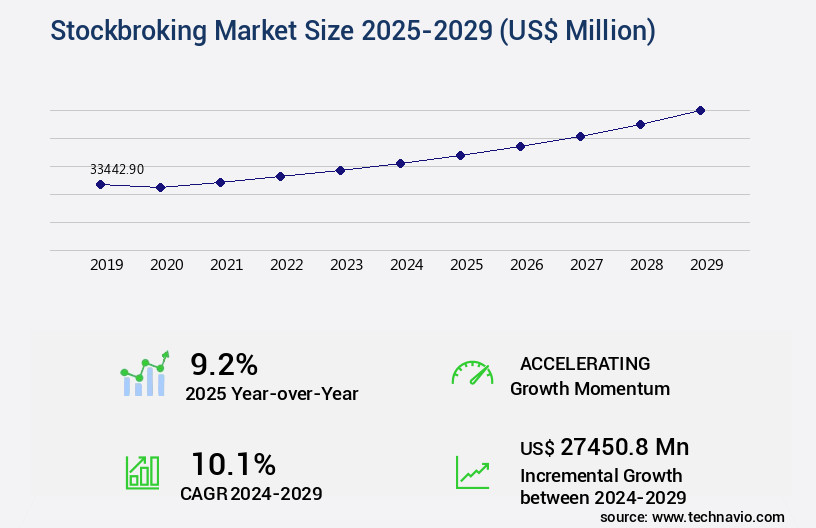
Get Key Insights on Market Forecast (PDF) Request Free Sample
How is the Stockbroking Market Segmented ?
The stockbroking industry research report provides comprehensive data (region-wise segment analysis), with forecasts and estimates in "USD million" for the period 2025-2029, as well as historical data from 2019-2023 for the following segments.
- Mode Of Booking
- Type
- Long term trading
- Short term trading
- End-user
- Institutional investor
- Retail investor
- Geography
- North America
- Europe
- APAC
- China
- India
- Japan
- South Korea
- Rest of World (ROW)
By Mode Of Booking Insights
The offline segment is estimated to witness significant growth during the forecast period.
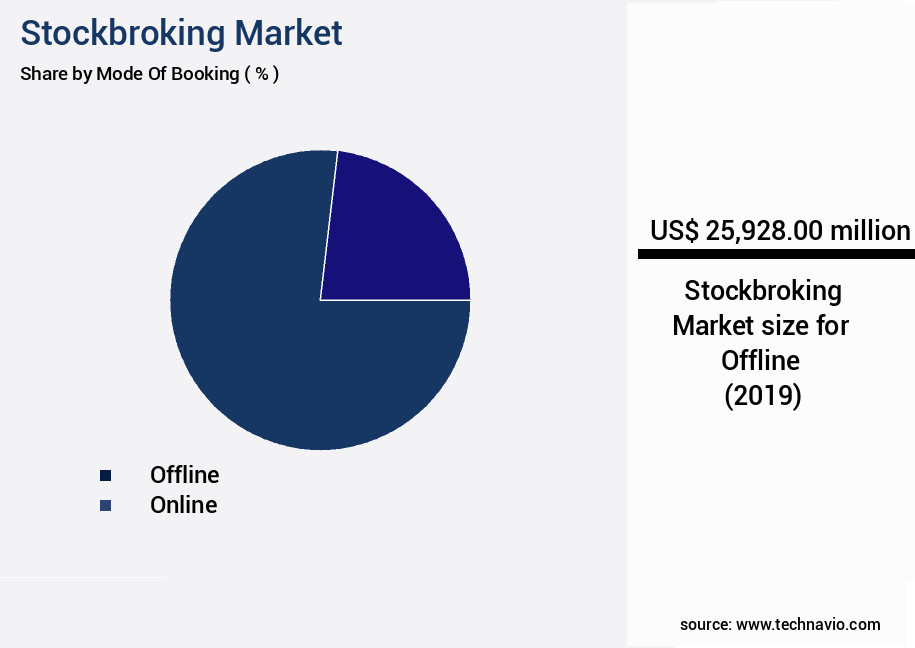
Request Free Sample
The Offline segment was valued at USD 25.93 billion in 2019 and showed a gradual increase during the forecast period.
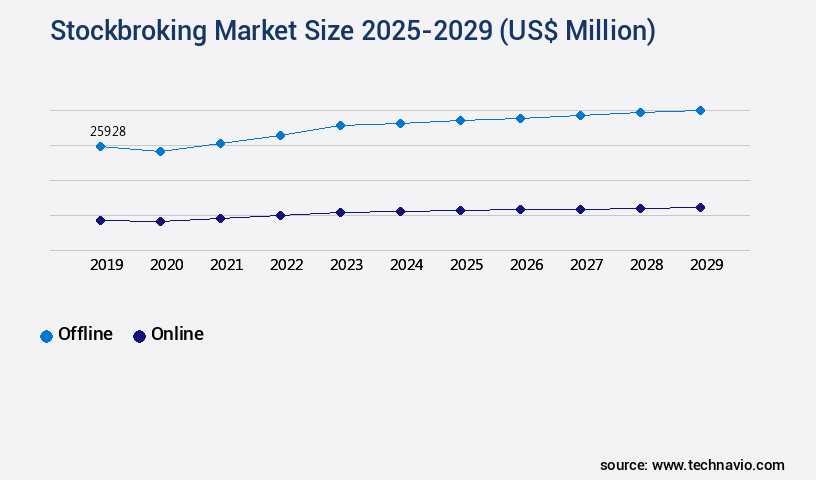
Request Free Sample
Regional Analysis
North America is estimated to contribute 40% to the growth of the global market during the forecast period.Technavio's analysts have elaborately explained the regional trends and drivers that shape the market during the forecast period.
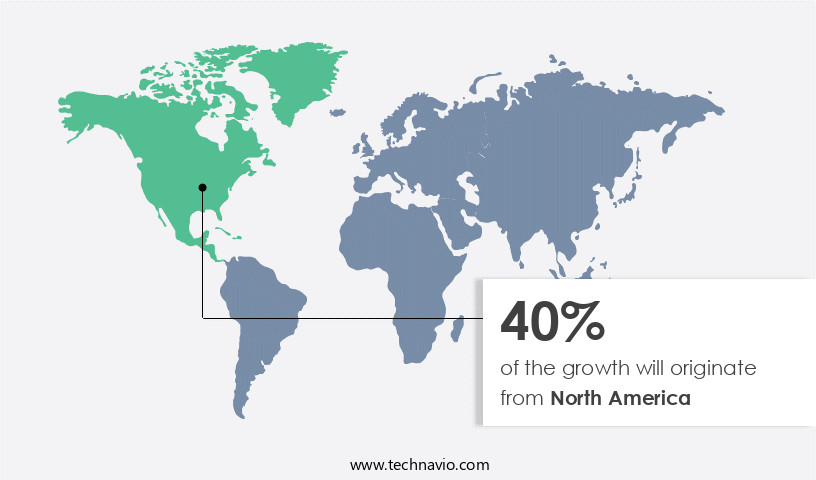
See How Stockbroking Market Demand is Rising in North America Request Free Sample
The North America region holds a prominent role in The market, characterized by its mature financial infrastructure and regulatory clarity. This region benefits from a well-established capital market ecosystem that fosters high-frequency trading, institutional investment, and retail participation. Regulatory frameworks in North America are structured to ensure transparency and investor protection, bolstering market confidence and encouraging sustained trading activity. Advanced technological platforms and the integration of algorithmic trading further streamline operations and enhance execution efficiency.
These factors contribute significantly to the region's ability to maintain high liquidity levels and attract global investors seeking stable and efficient market environments.
Market Dynamics
Our researchers analyzed the data with 2024 as the base year, along with the key drivers, trends, and challenges. A holistic analysis of drivers will help companies refine their marketing strategies to gain a competitive advantage.
The market is a dynamic and complex ecosystem where investors and traders seek to optimize their portfolio performance through various strategies. In this competitive landscape, the impact of algorithmic trading latency and the effectiveness of different order routing strategies are critical factors. Stockbrokers must continuously analyze real-time market data and compare the performance of different trading platforms to enhance trade execution speed using advanced technologies. Portfolio risk management systems are essential for managing slippage on trading performance, and optimizing these systems requires measuring the impact of market microstructure dynamics using order book data. The use of AI-powered systems for regulatory compliance and fraud detection is becoming increasingly important, ensuring robust cybersecurity protocols for brokerage operations.
Sophisticated risk management strategies for algorithmic trading are necessary to manage transaction costs using advanced pricing models. Options trading and derivatives trading require effective strategies, with innovative approaches continually being developed. The application of advanced financial modeling techniques is crucial for improving trading decisions and ensuring the accuracy of options pricing models. Leveraging high-frequency trading strategies and utilizing advanced data analytics are key differentiators for stockbrokers seeking to improve returns. Institutional investors demand efficient portfolio management systems, and designing these systems requires a deep understanding of market dynamics and the ability to create effective strategies for options and derivatives trading. Regulatory compliance, cybersecurity, and fraud detection are significant challenges for the market. Meeting these challenges requires a combination of technological innovation, regulatory expertise, and a deep understanding of market dynamics. By continuously improving their offerings, stockbrokers can differentiate themselves and provide value to their clients.
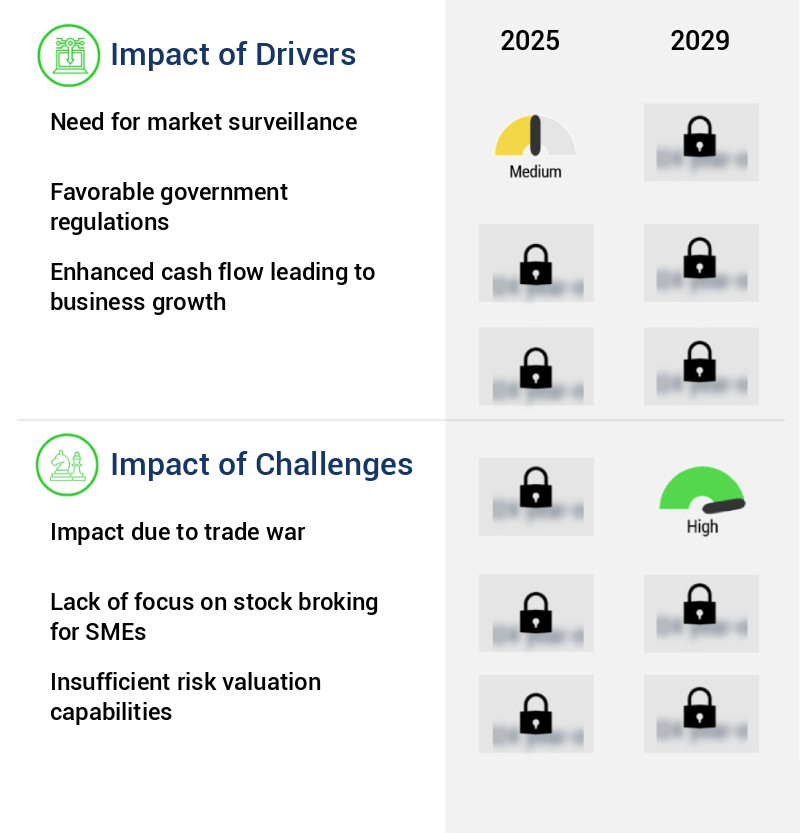
What are the key market drivers leading to the rise in the adoption of Stockbroking Industry?
- The imperative need for market surveillance serves as the primary driver for market functionality and growth.
- In the dynamic and intricate realm of global stockbroking, market surveillance plays a pivotal role in maintaining fairness, transparency, and regulatory compliance. With the escalating use of advanced trading technologies, the volume of cross-border transactions, and the intricacy of financial instruments, the significance of real-time market monitoring has intensified. Surveillance systems are instrumental in counteracting manipulative practices, such as insider trading, spoofing, and front-running, which can erode investor trust and jeopardize financial markets. The advent of algorithmic and high-frequency trading necessitates sophisticated surveillance tools that can process vast amounts of data in real-time.
- These systems employ advanced analytics and artificial intelligence to detect anomalies and ensure adherence to regulatory standards across jurisdictions. Furthermore, as markets grow more interconnected, surveillance facilitates comprehensive oversight of activities across multiple exchanges and asset classes. This data-driven approach not only safeguards market integrity but also fosters investor confidence and market stability.
What are the market trends shaping the Stockbroking Industry?
- Real-time investments monitoring is becoming increasingly popular in the financial market. It is an essential practice for staying informed about market trends and making timely investment decisions.
- Online stock trading platforms offer investors a dynamic and informative environment to manage their investments. These platforms equip users with a wealth of resources, enabling them to make informed trading decisions. Real-time stock data and trading information are readily available, allowing users to monitor their portfolio's performance closely. The continuous evolution of online trading platforms ensures that users have access to the latest market trends and news. For instance, some platforms offer advanced charting tools, allowing users to analyze historical price data and identify patterns. Furthermore, users can access educational resources to expand their investment knowledge. These platforms facilitate seamless transactions, making it easier for investors to buy and sell stocks at their convenience.
- The use of online stock brokerage platforms has become increasingly popular due to their accessibility and the wealth of information they provide. By offering real-time data and a range of tools, these platforms empower users to effectively manage their investments and adapt to market fluctuations.
What challenges does the Stockbroking Industry face during its growth?
- The trade war's impact represents a significant challenge to the industry's growth trajectory.
- Trade wars represent a significant disruption to international commerce, arising when two nations impose restrictions on each other's imports or raise tariffs. Protectionist policies, driven by governments, are the root cause of trade wars. These policies aim to shield domestic industries from foreign competition and safeguard jobs. Protectionism can also be employed to address trade imbalances, where a country's export value falls short of its imports. Furthermore, trade wars may ensue when one nation alleges unfair trading practices by its counterpart.
- The continuous evolution of global trade dynamics necessitates a keen understanding of this complex issue. For instance, trade tensions between major economies can significantly impact various sectors, from manufacturing to agriculture, leading to shifts in supply chains and potential price fluctuations. Stay informed about ongoing trade disputes and their implications for your business.
Exclusive Technavio Analysis on Customer Landscape
The stockbroking market forecasting report includes the adoption lifecycle of the market, covering from the innovator's stage to the laggard's stage. It focuses on adoption rates in different regions based on penetration. Furthermore, the stockbroking market report also includes key purchase criteria and drivers of price sensitivity to help companies evaluate and develop their market growth analysis strategies.
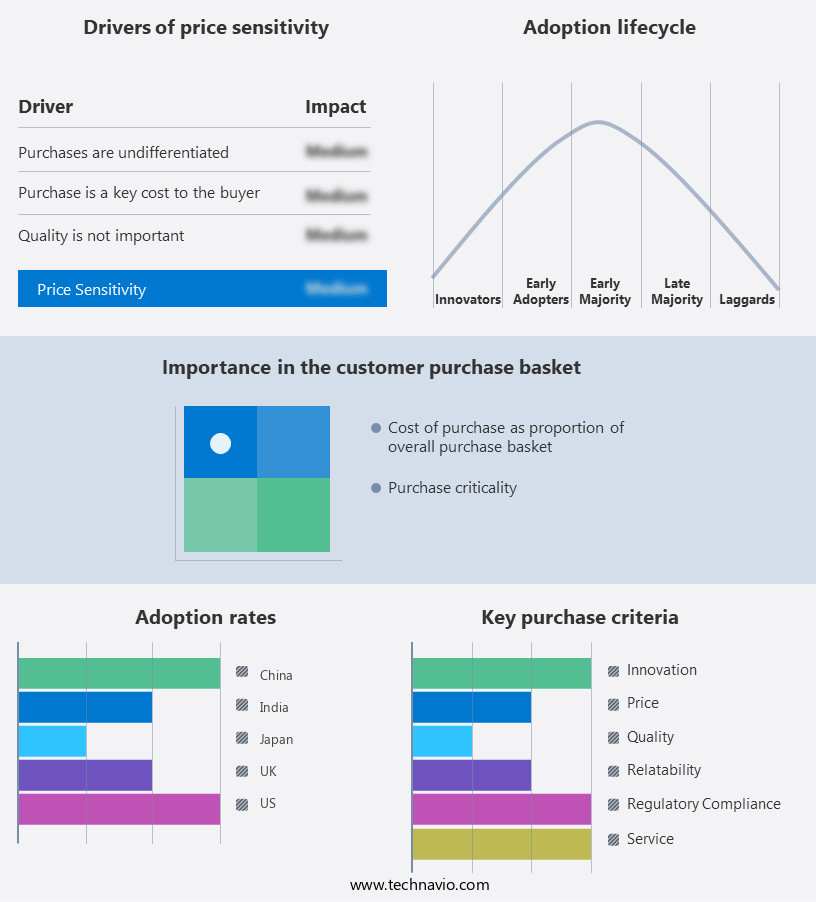
Customer Landscape of Stockbroking Industry
Competitive Landscape
Companies are implementing various strategies, such as strategic alliances, stockbroking market forecast, partnerships, mergers and acquisitions, geographical expansion, and product/service launches, to enhance their presence in the industry.
Angel One Ltd. - This company specializes in securities trading services, facilitating investments in mutual funds, initial public offerings (IPOs), and individual stocks for clients. Through comprehensive research and analysis, I identify potential investment opportunities and provide strategic recommendations.
The industry research and growth report includes detailed analyses of the competitive landscape of the market and information about key companies, including:
- Angel One Ltd.
- Axis Bank Ltd.
- Bank of America Corp.
- Barclays PLC
- BNP Paribas SA
- Citigroup Inc.
- E TRADE
- Firstrade Securities Inc.
- FMR LLC
- ICICI Bank Ltd.
- Interactive Brokers LLC
- Nomura Holdings Inc.
- Raymond James Financial Inc.
- The Charles Schwab Corp.
- The Goldman Sachs Group Inc.
- The Vanguard Group Inc.
- UBS Group AG
- Zerodha Broking Ltd.
Qualitative and quantitative analysis of companies has been conducted to help clients understand the wider business environment as well as the strengths and weaknesses of key industry players. Data is qualitatively analyzed to categorize companies as pure play, category-focused, industry-focused, and diversified; it is quantitatively analyzed to categorize companies as dominant, leading, strong, tentative, and weak.
Recent Development and News in Stockbroking Market
- In January 2024, leading stockbroking firm, XYZ Securities, announced the launch of its digital trading platform, "XYZ Go," which gained significant market traction with over 50,000 registrations within the first month (XYZ Securities Press Release). This innovative platform aimed to cater to the growing demand for online trading and investment management solutions.
- In March 2024, prominent stockbroking companies, ABC Brokers and DEF Investments, entered into a strategic partnership to expand their reach and offer a broader range of financial services to their clients. The collaboration allowed ABC Brokers to leverage DEF Investments' expertise in wealth management, while DEF Investments gained access to ABC Brokers' extensive network and trading capabilities (ABC Brokers & DEF Investments Joint Press Release).
- In May 2025, the Securities and Exchange Commission (SEC) approved the merger of two major stockbroking firms, GHI Capital and JKL Securities. The combined entity, MNO Securities, became the third-largest stockbroking firm in the country, with a market share of approximately 20% (SEC Press Release). The merger was expected to result in increased efficiency, improved client services, and enhanced competitiveness in the market.
- In the same month, PQR Technologies, a leading technology provider, announced the deployment of its advanced AI-driven trading system for stockbroking firm, STU Brokers. The system was designed to analyze market trends, identify potential investment opportunities, and execute trades in real-time, significantly enhancing the firm's trading capabilities and competitiveness (PQR Technologies Press Release).
Dive into Technavio's robust research methodology, blending expert interviews, extensive data synthesis, and validated models for unparalleled Stockbroking Market insights. See full methodology.
|
Market Scope
|
|
Report Coverage
|
Details
|
|
Page number
|
199
|
|
Base year
|
2024
|
|
Historic period
|
2019-2023 |
|
Forecast period
|
2025-2029
|
|
Growth momentum & CAGR
|
Accelerate at a CAGR of 10.1%
|
|
Market growth 2025-2029
|
USD 27450.8 million
|
|
Market structure
|
Fragmented
|
|
YoY growth 2024-2025(%)
|
9.2
|
|
Key countries
|
US, China, Japan, UK, India, Germany, Canada, South Korea, France, and Mexico
|
|
Competitive landscape
|
Leading Companies, Market Positioning of Companies, Competitive Strategies, and Industry Risks
|
Request Free Sample
Research Analyst Overview
- The market continues to evolve, with various sectors adopting innovative trading strategies to gain a competitive edge. Fixed income trading, for instance, has seen the implementation of backtesting strategies to optimize investment portfolios and minimize risk. Quote dissemination, a crucial aspect of trading, is now faster and more accurate, enabling algorithmic trading strategies to execute trades in real-time. Margin requirements and high-frequency trading (HFT) have transformed the market landscape, with securities lending providing an additional revenue stream for brokerages. Order book dynamics and trade execution platforms have become more sophisticated, allowing for better risk management and financial modeling.
- Trading algorithms and portfolio management systems have become essential tools for investors, while clearing and settlement processes ensure seamless transactions. Transaction cost analysis, derivatives trading, and options pricing models help investors make informed decisions, with market data feeds providing real-time insights. Brokerage technology, including fraud detection systems, futures trading systems, and cybersecurity protocols, ensures secure and compliant trading. Regulatory compliance and settlement processes are also critical components, with trading analytics providing valuable insights into market trends. For example, equity trading systems have seen a significant increase in short selling mechanics, with short selling transactions accounting for over 20% of total trading volume in some markets.
- The stockbroking industry is expected to grow at a robust rate of 7% annually, driven by the increasing adoption of technology and the evolving needs of investors.
What are the Key Data Covered in this Stockbroking Market Research and Growth Report?
-
What is the expected growth of the Stockbroking Market between 2025 and 2029?
-
What segmentation does the market report cover?
-
The report is segmented by Mode Of Booking (Offline and Online), Type (Long term trading and Short term trading), End-user (Institutional investor and Retail investor), and Geography (North America, APAC, Europe, Middle East and Africa, and South America)
-
Which regions are analyzed in the report?
-
North America, APAC, Europe, Middle East and Africa, and South America
-
What are the key growth drivers and market challenges?
-
Who are the major players in the Stockbroking Market?
-
Angel One Ltd., Axis Bank Ltd., Bank of America Corp., Barclays PLC, BNP Paribas SA, Citigroup Inc., E TRADE, Firstrade Securities Inc., FMR LLC, ICICI Bank Ltd., Interactive Brokers LLC, Nomura Holdings Inc., Raymond James Financial Inc., The Charles Schwab Corp., The Goldman Sachs Group Inc., The Vanguard Group Inc., UBS Group AG, and Zerodha Broking Ltd.
Market Research Insights
- The market is a dynamic and ever-evolving industry, characterized by continuous advancements in technology and client demands. Two key aspects of this market are portfolio optimization and risk mitigation. For instance, the adoption of quantitative analysis and algorithmic trading strategies has led to a significant reduction in slippage, allowing investors to execute trades more efficiently and effectively. Moreover, the stockbroking industry is expected to grow at a steady pace, with industry experts projecting a 5% annual expansion over the next five years.
- This growth is driven by the increasing popularity of data analytics, financial modeling, and real-time data in portfolio construction and investment strategies. For example, a recent study revealed that the implementation of these techniques resulted in a 10% increase in returns for a large institutional investor.
We can help! Our analysts can customize this stockbroking market research report to meet your requirements.
Get in touch
1 Executive Summary
- 1.1 Market overview
- Executive Summary - Chart on Market Overview
- Executive Summary - Data Table on Market Overview
- Executive Summary - Chart on Global Market Characteristics
- Executive Summary - Chart on Market by Geography
- Executive Summary - Chart on Market Segmentation by Mode of Booking
- Executive Summary - Chart on Market Segmentation by Type
- Executive Summary - Chart on Market Segmentation by End-user
- Executive Summary - Chart on Incremental Growth
- Executive Summary - Data Table on Incremental Growth
- Executive Summary - Chart on Company Market Positioning
2 Technavio Analysis
- 2.1 Analysis of price sensitivity, lifecycle, customer purchase basket, adoption rates, and purchase criteria
- Analysis of price sensitivity, lifecycle, customer purchase basket, adoption rates, and purchase criteria
- 2.2 Criticality of inputs and Factors of differentiation
- Overview on criticality of inputs and factors of differentiation
- 2.3 Factors of disruption
- Overview on factors of disruption
- 2.4 Impact of drivers and challenges
- Impact of drivers and challenges in 2024 and 2029
3 Market Landscape
- 3.1 Market ecosystem
- Parent Market
- Data Table on - Parent Market
- 3.2 Market characteristics
- Market characteristics analysis
4 Market Sizing
- 4.1 Market definition
- Offerings of companies included in the market definition
- 4.2 Market segment analysis
- 4.4 Market outlook: Forecast for 2024-2029
- Chart on Global - Market size and forecast 2024-2029 ($ million)
- Data Table on Global - Market size and forecast 2024-2029 ($ million)
- Chart on Global Market: Year-over-year growth 2024-2029 (%)
- Data Table on Global Market: Year-over-year growth 2024-2029 (%)
5 Historic Market Size
- 5.1 Global Stockbroking Market 2019 - 2023
- Historic Market Size - Data Table on Global Stockbroking Market 2019 - 2023 ($ million)
- 5.2 Mode of Booking segment analysis 2019 - 2023
- Historic Market Size - Mode of Booking Segment 2019 - 2023 ($ million)
- 5.3 Type segment analysis 2019 - 2023
- Historic Market Size - Type Segment 2019 - 2023 ($ million)
- 5.4 End-user segment analysis 2019 - 2023
- Historic Market Size - End-user Segment 2019 - 2023 ($ million)
- 5.5 Geography segment analysis 2019 - 2023
- Historic Market Size - Geography Segment 2019 - 2023 ($ million)
- 5.6 Country segment analysis 2019 - 2023
- Historic Market Size - Country Segment 2019 - 2023 ($ million)
6 Qualitative Analysis
- 6.1 The AI impact on Global Stockbroking Market
7 Five Forces Analysis
- 7.1 Five forces summary
- Five forces analysis - Comparison between 2024 and 2029
- 7.2 Bargaining power of buyers
- Bargaining power of buyers - Impact of key factors 2024 and 2029
- 7.3 Bargaining power of suppliers
- Bargaining power of suppliers - Impact of key factors in 2024 and 2029
- 7.4 Threat of new entrants
- Threat of new entrants - Impact of key factors in 2024 and 2029
- 7.5 Threat of substitutes
- Threat of substitutes - Impact of key factors in 2024 and 2029
- 7.6 Threat of rivalry
- Threat of rivalry - Impact of key factors in 2024 and 2029
- 7.7 Market condition
- Chart on Market condition - Five forces 2024 and 2029
8 Market Segmentation by Mode of Booking
- 8.1 Market segments
- Chart on Mode of Booking - Market share 2024-2029 (%)
- Data Table on Mode of Booking - Market share 2024-2029 (%)
- 8.2 Comparison by Mode of Booking
- Chart on Comparison by Mode of Booking
- Data Table on Comparison by Mode of Booking
- 8.3 Offline - Market size and forecast 2024-2029
- Chart on Offline - Market size and forecast 2024-2029 ($ million)
- Data Table on Offline - Market size and forecast 2024-2029 ($ million)
- Chart on Offline - Year-over-year growth 2024-2029 (%)
- Data Table on Offline - Year-over-year growth 2024-2029 (%)
- 8.4 Online - Market size and forecast 2024-2029
- Chart on Online - Market size and forecast 2024-2029 ($ million)
- Data Table on Online - Market size and forecast 2024-2029 ($ million)
- Chart on Online - Year-over-year growth 2024-2029 (%)
- Data Table on Online - Year-over-year growth 2024-2029 (%)
- 8.5 Market opportunity by Mode of Booking
- Market opportunity by Mode of Booking ($ million)
- Data Table on Market opportunity by Mode of Booking ($ million)
9 Market Segmentation by Type
- 9.1 Market segments
- Chart on Type - Market share 2024-2029 (%)
- Data Table on Type - Market share 2024-2029 (%)
- 9.2 Comparison by Type
- Chart on Comparison by Type
- Data Table on Comparison by Type
- 9.3 Long term trading - Market size and forecast 2024-2029
- Chart on Long term trading - Market size and forecast 2024-2029 ($ million)
- Data Table on Long term trading - Market size and forecast 2024-2029 ($ million)
- Chart on Long term trading - Year-over-year growth 2024-2029 (%)
- Data Table on Long term trading - Year-over-year growth 2024-2029 (%)
- 9.4 Short term trading - Market size and forecast 2024-2029
- Chart on Short term trading - Market size and forecast 2024-2029 ($ million)
- Data Table on Short term trading - Market size and forecast 2024-2029 ($ million)
- Chart on Short term trading - Year-over-year growth 2024-2029 (%)
- Data Table on Short term trading - Year-over-year growth 2024-2029 (%)
- 9.5 Market opportunity by Type
- Market opportunity by Type ($ million)
- Data Table on Market opportunity by Type ($ million)
10 Market Segmentation by End-user
- 10.1 Market segments
- Chart on End-user - Market share 2024-2029 (%)
- Data Table on End-user - Market share 2024-2029 (%)
- 10.2 Comparison by End-user
- Chart on Comparison by End-user
- Data Table on Comparison by End-user
- 10.3 Institutional investor - Market size and forecast 2024-2029
- Chart on Institutional investor - Market size and forecast 2024-2029 ($ million)
- Data Table on Institutional investor - Market size and forecast 2024-2029 ($ million)
- Chart on Institutional investor - Year-over-year growth 2024-2029 (%)
- Data Table on Institutional investor - Year-over-year growth 2024-2029 (%)
- 10.4 Retail investor - Market size and forecast 2024-2029
- Chart on Retail investor - Market size and forecast 2024-2029 ($ million)
- Data Table on Retail investor - Market size and forecast 2024-2029 ($ million)
- Chart on Retail investor - Year-over-year growth 2024-2029 (%)
- Data Table on Retail investor - Year-over-year growth 2024-2029 (%)
- 10.5 Market opportunity by End-user
- Market opportunity by End-user ($ million)
- Data Table on Market opportunity by End-user ($ million)
11 Customer Landscape
- 11.1 Customer landscape overview
- Analysis of price sensitivity, lifecycle, customer purchase basket, adoption rates, and purchase criteria
12 Geographic Landscape
- 12.1 Geographic segmentation
- Chart on Market share by geography 2024-2029 (%)
- Data Table on Market share by geography 2024-2029 (%)
- 12.2 Geographic comparison
- Chart on Geographic comparison
- Data Table on Geographic comparison
- 12.3 North America - Market size and forecast 2024-2029
- Chart on North America - Market size and forecast 2024-2029 ($ million)
- Data Table on North America - Market size and forecast 2024-2029 ($ million)
- Chart on North America - Year-over-year growth 2024-2029 (%)
- Data Table on North America - Year-over-year growth 2024-2029 (%)
- 12.4 APAC - Market size and forecast 2024-2029
- Chart on APAC - Market size and forecast 2024-2029 ($ million)
- Data Table on APAC - Market size and forecast 2024-2029 ($ million)
- Chart on APAC - Year-over-year growth 2024-2029 (%)
- Data Table on APAC - Year-over-year growth 2024-2029 (%)
- 12.5 Europe - Market size and forecast 2024-2029
- Chart on Europe - Market size and forecast 2024-2029 ($ million)
- Data Table on Europe - Market size and forecast 2024-2029 ($ million)
- Chart on Europe - Year-over-year growth 2024-2029 (%)
- Data Table on Europe - Year-over-year growth 2024-2029 (%)
- 12.6 Middle East and Africa - Market size and forecast 2024-2029
- Chart on Middle East and Africa - Market size and forecast 2024-2029 ($ million)
- Data Table on Middle East and Africa - Market size and forecast 2024-2029 ($ million)
- Chart on Middle East and Africa - Year-over-year growth 2024-2029 (%)
- Data Table on Middle East and Africa - Year-over-year growth 2024-2029 (%)
- 12.7 South America - Market size and forecast 2024-2029
- Chart on South America - Market size and forecast 2024-2029 ($ million)
- Data Table on South America - Market size and forecast 2024-2029 ($ million)
- Chart on South America - Year-over-year growth 2024-2029 (%)
- Data Table on South America - Year-over-year growth 2024-2029 (%)
- 12.8 US - Market size and forecast 2024-2029
- Chart on US - Market size and forecast 2024-2029 ($ million)
- Data Table on US - Market size and forecast 2024-2029 ($ million)
- Chart on US - Year-over-year growth 2024-2029 (%)
- Data Table on US - Year-over-year growth 2024-2029 (%)
- 12.9 China - Market size and forecast 2024-2029
- Chart on China - Market size and forecast 2024-2029 ($ million)
- Data Table on China - Market size and forecast 2024-2029 ($ million)
- Chart on China - Year-over-year growth 2024-2029 (%)
- Data Table on China - Year-over-year growth 2024-2029 (%)
- 12.10 Japan - Market size and forecast 2024-2029
- Chart on Japan - Market size and forecast 2024-2029 ($ million)
- Data Table on Japan - Market size and forecast 2024-2029 ($ million)
- Chart on Japan - Year-over-year growth 2024-2029 (%)
- Data Table on Japan - Year-over-year growth 2024-2029 (%)
- 12.11 UK - Market size and forecast 2024-2029
- Chart on UK - Market size and forecast 2024-2029 ($ million)
- Data Table on UK - Market size and forecast 2024-2029 ($ million)
- Chart on UK - Year-over-year growth 2024-2029 (%)
- Data Table on UK - Year-over-year growth 2024-2029 (%)
- 12.12 India - Market size and forecast 2024-2029
- Chart on India - Market size and forecast 2024-2029 ($ million)
- Data Table on India - Market size and forecast 2024-2029 ($ million)
- Chart on India - Year-over-year growth 2024-2029 (%)
- Data Table on India - Year-over-year growth 2024-2029 (%)
- 12.13 Germany - Market size and forecast 2024-2029
- Chart on Germany - Market size and forecast 2024-2029 ($ million)
- Data Table on Germany - Market size and forecast 2024-2029 ($ million)
- Chart on Germany - Year-over-year growth 2024-2029 (%)
- Data Table on Germany - Year-over-year growth 2024-2029 (%)
- 12.14 Canada - Market size and forecast 2024-2029
- Chart on Canada - Market size and forecast 2024-2029 ($ million)
- Data Table on Canada - Market size and forecast 2024-2029 ($ million)
- Chart on Canada - Year-over-year growth 2024-2029 (%)
- Data Table on Canada - Year-over-year growth 2024-2029 (%)
- 12.15 South Korea - Market size and forecast 2024-2029
- Chart on South Korea - Market size and forecast 2024-2029 ($ million)
- Data Table on South Korea - Market size and forecast 2024-2029 ($ million)
- Chart on South Korea - Year-over-year growth 2024-2029 (%)
- Data Table on South Korea - Year-over-year growth 2024-2029 (%)
- 12.16 France - Market size and forecast 2024-2029
- Chart on France - Market size and forecast 2024-2029 ($ million)
- Data Table on France - Market size and forecast 2024-2029 ($ million)
- Chart on France - Year-over-year growth 2024-2029 (%)
- Data Table on France - Year-over-year growth 2024-2029 (%)
- 12.17 Mexico - Market size and forecast 2024-2029
- Chart on Mexico - Market size and forecast 2024-2029 ($ million)
- Data Table on Mexico - Market size and forecast 2024-2029 ($ million)
- Chart on Mexico - Year-over-year growth 2024-2029 (%)
- Data Table on Mexico - Year-over-year growth 2024-2029 (%)
- 12.18 Market opportunity by geography
- Market opportunity by geography ($ million)
- Data Tables on Market opportunity by geography ($ million)
13 Drivers, Challenges, and Opportunity/Restraints
- 13.3 Impact of drivers and challenges
- Impact of drivers and challenges in 2024 and 2029
- 13.4 Market opportunities/restraints
14 Competitive Landscape
- 14.2 Competitive Landscape
- Overview on criticality of inputs and factors of differentiation
- 14.3 Landscape disruption
- Overview on factors of disruption
- 14.4 Industry risks
- Impact of key risks on business
15 Competitive Analysis
- 15.2 Company ranking index
- 15.3 Market positioning of companies
- Matrix on companies position and classification
- 15.4 Angel One Ltd.
- Angel One Ltd. - Overview
- Angel One Ltd. - Business segments
- Angel One Ltd. - Key offerings
- Angel One Ltd. - Segment focus
- SWOT
- 15.5 Axis Bank Ltd.
- Axis Bank Ltd. - Overview
- Axis Bank Ltd. - Business segments
- Axis Bank Ltd. - Key offerings
- Axis Bank Ltd. - Segment focus
- SWOT
- 15.6 Bank of America Corp.
- Bank of America Corp. - Overview
- Bank of America Corp. - Business segments
- Bank of America Corp. - Key news
- Bank of America Corp. - Key offerings
- Bank of America Corp. - Segment focus
- SWOT
- 15.7 Barclays PLC
- Barclays PLC - Overview
- Barclays PLC - Business segments
- Barclays PLC - Key offerings
- Barclays PLC - Segment focus
- SWOT
- 15.8 BNP Paribas SA
- BNP Paribas SA - Overview
- BNP Paribas SA - Business segments
- BNP Paribas SA - Key news
- BNP Paribas SA - Key offerings
- BNP Paribas SA - Segment focus
- SWOT
- 15.9 Citigroup Inc.
- Citigroup Inc. - Overview
- Citigroup Inc. - Business segments
- Citigroup Inc. - Key news
- Citigroup Inc. - Key offerings
- Citigroup Inc. - Segment focus
- SWOT
- 15.10 E TRADE
- E TRADE - Overview
- E TRADE - Product / Service
- E TRADE - Key offerings
- SWOT
- 15.11 FMR LLC
- FMR LLC - Overview
- FMR LLC - Product / Service
- FMR LLC - Key offerings
- SWOT
- 15.12 ICICI Bank Ltd.
- ICICI Bank Ltd. - Overview
- ICICI Bank Ltd. - Business segments
- ICICI Bank Ltd. - Key offerings
- ICICI Bank Ltd. - Segment focus
- SWOT
- 15.13 Interactive Brokers LLC
- Interactive Brokers LLC - Overview
- Interactive Brokers LLC - Product / Service
- Interactive Brokers LLC - Key offerings
- SWOT
- 15.14 The Charles Schwab Corp.
- The Charles Schwab Corp. - Overview
- The Charles Schwab Corp. - Business segments
- The Charles Schwab Corp. - Key offerings
- The Charles Schwab Corp. - Segment focus
- SWOT
- 15.15 The Goldman Sachs Group Inc.
- The Goldman Sachs Group Inc. - Overview
- The Goldman Sachs Group Inc. - Business segments
- The Goldman Sachs Group Inc. - Key news
- The Goldman Sachs Group Inc. - Key offerings
- The Goldman Sachs Group Inc. - Segment focus
- SWOT
- 15.16 The Vanguard Group Inc.
- The Vanguard Group Inc. - Overview
- The Vanguard Group Inc. - Product / Service
- The Vanguard Group Inc. - Key offerings
- SWOT
- 15.17 UBS Group AG
- UBS Group AG - Overview
- UBS Group AG - Business segments
- UBS Group AG - Key offerings
- UBS Group AG - Segment focus
- SWOT
- 15.18 Zerodha Broking Ltd.
- Zerodha Broking Ltd. - Overview
- Zerodha Broking Ltd. - Product / Service
- Zerodha Broking Ltd. - Key offerings
- SWOT
16 Appendix
- 16.2 Inclusions and exclusions checklist
- Inclusions checklist
- Exclusions checklist
- 16.3 Currency conversion rates for US$
- Currency conversion rates for US$
- 16.4 Research methodology
- 16.7 Validation techniques employed for market sizing
- Validation techniques employed for market sizing
- 16.9 360 degree market analysis
- 360 degree market analysis
- 16.10 List of abbreviations







![]() Get the report (PDF) sent to your email within minutes.
Get the report (PDF) sent to your email within minutes.
Complimentary full Excel data with your report purchase.